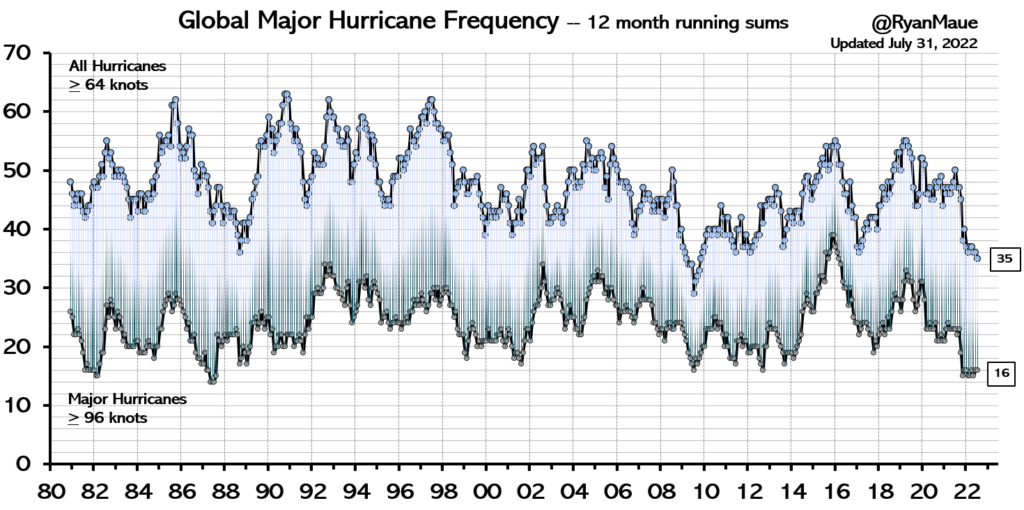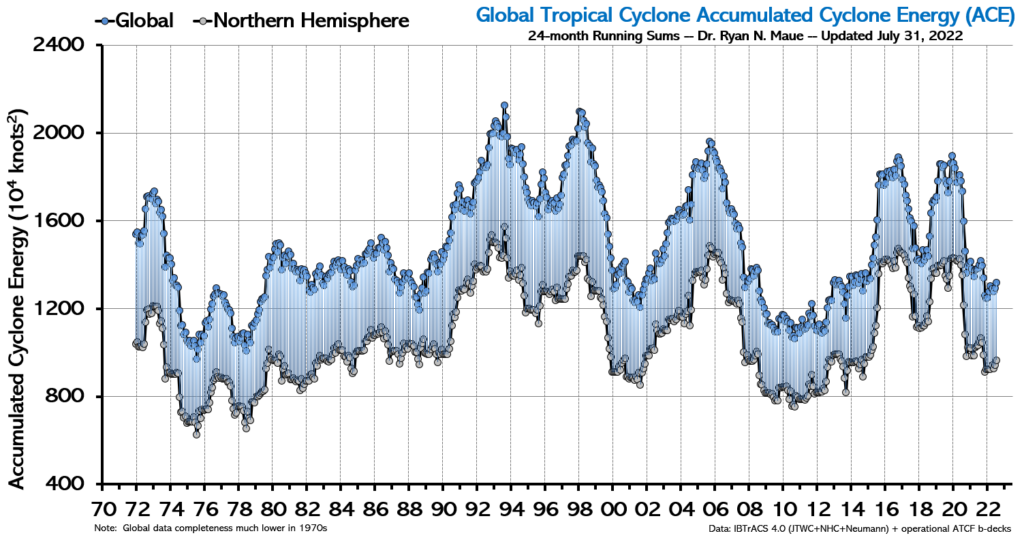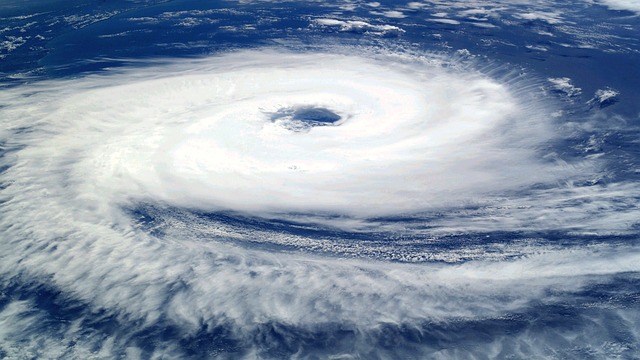- There is no evidence to support claims that storms have increasing frequency or intensity.
- Studies that claim to have identified a link between storms and anthropogenic global warming are based on computer simulations, not observations.
- Storms are a problem that should be taken seriously without confusing the issue with climate change.
A video to promote the 2009 COP15 meeting in Copenhagen published by the Danish Ministry of Foreign Affairs depicted a young girl being chased across a desolate landscape by a violent storm – a nightmare depicting the future ahead of the world’s children if climate change is not stopped. The idea of storms becoming more frequent and intense has driven many climate change narratives, and many public figures cite the increasing danger and damage caused by storms to argue for radical climate change policies. The video epitomises this mode of communication, but it owes very little to observational science.
Storms are weather phenomena that are relatively easy to identify, but not as straightforward as, for example, metrics like temperature or precipitation. According to some interpretations of global warming science, increased global temperatures will add energy to the atmosphere, which will in turn drive more violent storms. As with other consequences, it is important to distinguish between the putative direct meteorological effects of global warming such as the number of storms (i.e. climate change), with the impacts of storms measured by economic loss. This article is about the meteorological evidence, not about impacts, which is discussed in detail in another section of the site.
The IPCC’s view is that,
Identifying past trends in [tropical cyclone] metrics remains a challenge due to the heterogeneous character of the historical instrumental data, which are known as ‘best-track’ data (Schreck et al., 2014). There is low confidence in most reported long-term (multi-decadal to centennial) trends in [tropical cyclone] frequency- or intensity-based metrics due to changes in the technology used to collect the best-track data. (AR6 Ch. 11.7.1.2)
This is a fairly definitive statement that clear evidence of climate change has not yet been found in hurricane data. This is shown more clearly in data depicting the frequency of major hurricanes and tropical storms and hurricanes in the charts below (source).


A measurement of storms’ Accumulated Cyclone Energy (ACE), which is similar to intensity, also shows that there is no clear trend yet visible in the data.

However, the IPCC states that this absence of evidence is not evidence of absence:
This should not be interpreted as implying that no physical (real) trends exist, but rather as indicating that either the quality or the temporal length of the data is not adequate to provide robust trend detection statements, particularly in the presence of multi-decadal variability.
Nonetheless, what this data does show is that claims that storms have become more frequent and intense, and that these changes can be attributed to anthropogenic global warming and represent part of a “climate emergency”, are manifestly false. And this has been a major problem for political narratives that urge radical and urgent political action.
This has caused some researchers and activists to search deeper within data to find evidence of anthropogenic influence. Climate activist blog, The Carbon Brief for example, emphasises the IPCC’s estimates of a “likely increase” of metrics such as “the global proportion of Category 3–5 tropical cyclone instances”, and “the frequency of rapid intensification events”, rather than simple frequency and intensity. Similarly, the claim is made that global warming may have caused storms to move more slowly, causing greater rainfall to land in one place. But these metrics are far less robust than frequency and intensity, are poorly explained in IPCC and secondary literature, and are supported by significantly less data, if at all. The putative increased “proportion of Category 3–5 tropical cyclone instances”, for example, is of little consequence unless there are more of them, which metrics of both ACE and hurricane frequency suggest is not the case – there may well be a trend of less of them.
Other attempts to find an anthropogenic signal in historical storm data have also depended on methods that may not be robust. A 2021 paper in Nature Communications, for example, claimed to have identified a trend of increasing hurricane activity since 1851. This seemed to answer the shortcomings of the data that the IPCC had identified, precluding a definitive statement of global warming’s influence on hurricanes. A Washington Post article on the study produced the dramatic headline that, “Study finds Atlantic hurricanes becoming more frequent, destructive”, and that “Hurricanes are the most costly disasters for the United States, and a study suggests they’re increasing in number and ferocity”. But the study had not based its dramatic conclusions on observations. Instead of using data from the real world, the author had used a climate model to fill gaps in the data. But such models, though they may be useful for developing and exploring hypotheses, are about as good as fictional statements about reality. As is discussed in other sections on this site, computer simulations are not faithful facsimiles of the past or real world, and thus cannot be used to make bold scientific claims.
The controversies in this field of science will continue, though some researchers highlight the importance of understanding the science of meteorology, without being bogged down by debates about global warming. Storms are a very real and significant problem for people across the world, which require scientific understanding to better predict and mitigate risks, whether or not they are influenced by anthropogenic effects.
